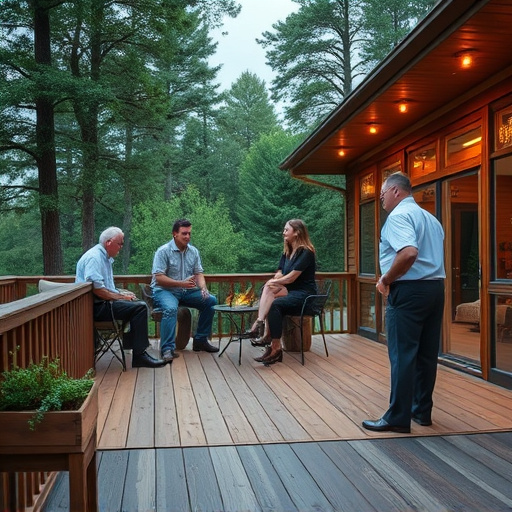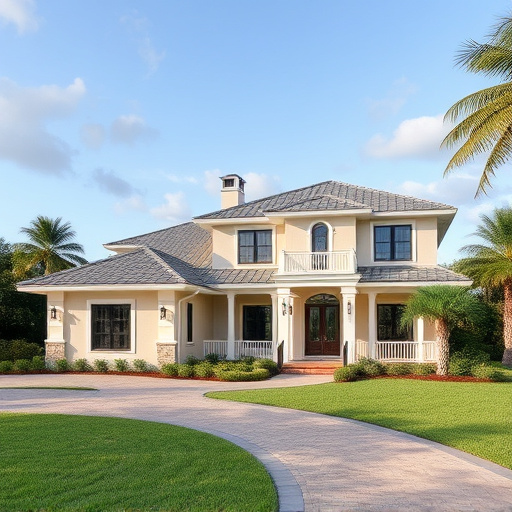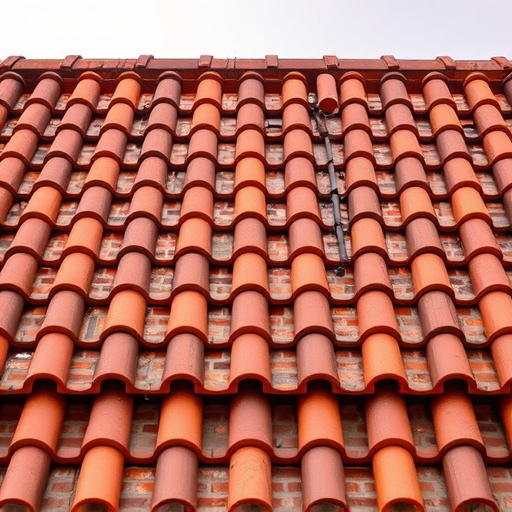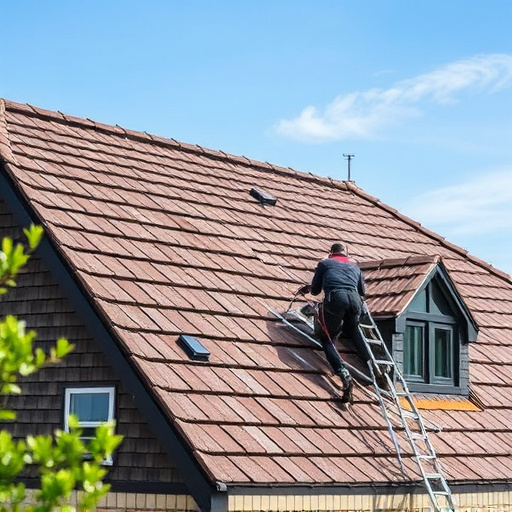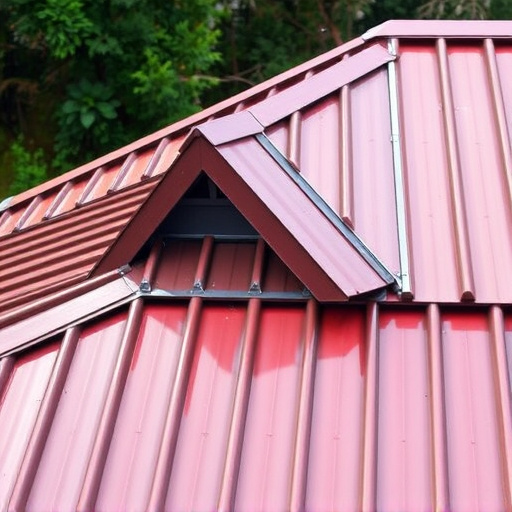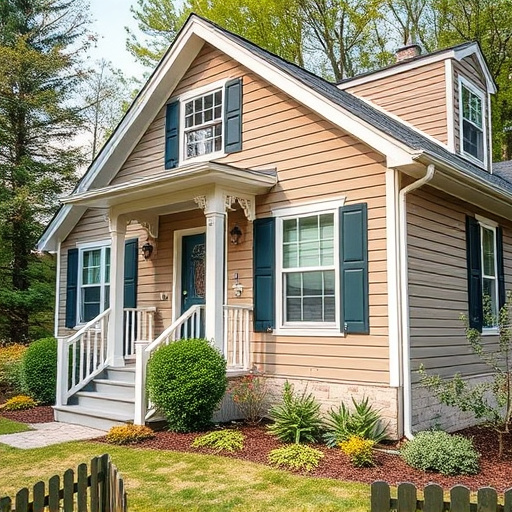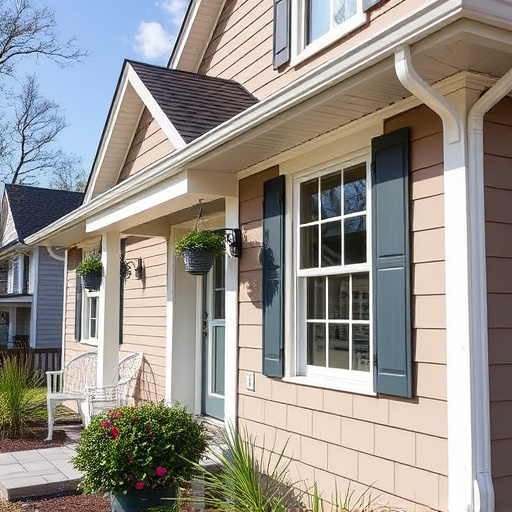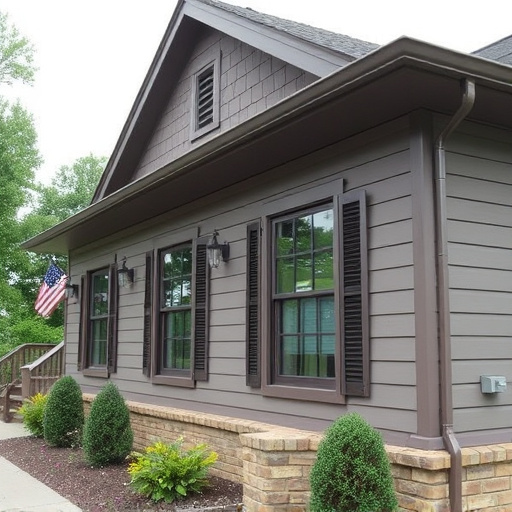Commercial siding plays a vital role in both protecting buildings from weather and enhancing their exterior design, with options like metal, vinyl, fiber cement, and polymer composites offering unique benefits. Choosing the right material is crucial for aligning branding goals, as it contributes to structural integrity, visual consistency, and occupant engagement. Integrating siding with brand identity creates a cohesive narrative that resonates with the target audience, strengthens marketing strategies, and enhances customer experiences, making commercial siding a key component in today's competitive building market.
In today’s competitive market, commercial siding goes beyond mere aesthetics—it’s a powerful tool for architectural branding. Effective siding selection can elevate a building’s visual appeal, convey brand values, and foster a strong first impression. This article explores the art of matching commercial siding with architectural branding. We delve into various materials, styles, and strategies to integrate siding seamlessly with your brand identity, enhancing both functionality and style in the process. Understanding these elements is key to standing out in a bustling market.
- Understanding Commercial Siding: Materials and Styles
- The Role of Architectural Branding in Building Design
- Integrating Commercial Siding with Brand Identity Effectively
Understanding Commercial Siding: Materials and Styles
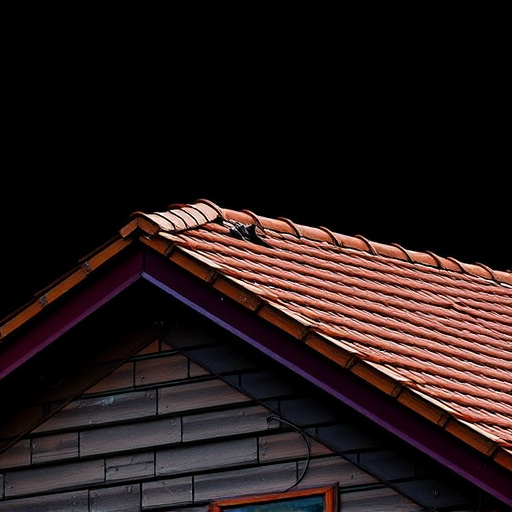
Commercial siding plays a pivotal role in defining a building’s exterior aesthetic and functionality. It serves as a protective barrier against harsh weather conditions while enhancing visual appeal. Understanding commercial siding involves exploring diverse materials and styles available in the market today. Beyond traditional options like metal, vinyl, and fiber cement, innovative materials such as polymer composites offer enhanced durability, low maintenance, and customizable designs.
Each material comes with its unique attributes that align with specific architectural branding goals. For instance, metal siding exudes a modern and industrial charm, ideal for contemporary commercial structures seeking to project a robust and sleek image. Vinyl siding, known for its cost-effectiveness and wide range of colors, is popular among businesses aiming for a more classic or traditional look. Roofing services professionals often recommend conducting thorough research into roof replacement options, considering factors like climate compatibility, structural integrity, and long-term visual consistency with the building’s overall branding.
The Role of Architectural Branding in Building Design
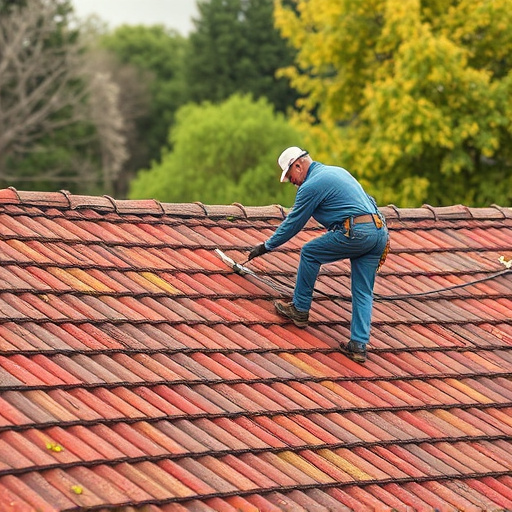
In today’s competitive building market, architectural branding stands as a pivotal aspect that distinguishes one structure from another. It encompasses the unique visual identity and aesthetic appeal of a commercial space, playing a significant role in how potential tenants or buyers perceive and interact with a property. A strong architectural brand seamlessly integrates with the overall design philosophy, ensuring that every element, from exterior cladding to interior layouts, tells a cohesive story. When considering commercial siding, for instance, architects and designers must align the chosen material and style with the building’s branding to create a visually stunning and harmonious structure.
By focusing on architectural branding, developers and property managers can elevate their projects beyond mere functionality. It invites occupants to connect emotionally with the space, fostering a sense of belonging and enhancing overall well-being. Furthermore, a distinct brand identity contributes to effective marketing strategies, as it allows businesses to target specific demographics and create a lasting impression in a crowded real estate market. Integrating this concept with practical considerations like roofing and siding repairs ensures that the building not only looks impressive but also stands the test of time.
Integrating Commercial Siding with Brand Identity Effectively

When integrating commercial siding with brand identity, the goal is to create a cohesive visual narrative that resonates with your target audience. Effective branding goes beyond mere aesthetics; it involves aligning the material choices and design elements with your company’s values and mission. Commercial siding, as a key component of any business’s exterior, should reflect the essence of your brand. For instance, a tech startup might opt for sleek, modern siding that mirrors their innovative spirit, while a traditional brick-and-mortar store could choose more classic materials that evoke reliability and longevity.
Consulting with roof and siding specialists can help you make informed decisions tailored to both your commercial property’s needs and your brand identity. They provide valuable insights on the latest trends in commercial siding and gutters, ensuring you stay ahead of the competition. Ultimately, a successful integration of commercial siding with brand identity requires a balance between aesthetics and functionality, creating an environment that not only captivates customers but also communicates your brand story effectively across your entire property, from the exterior down to home service solutions.
When it comes to enhancing architectural branding, commercial siding plays a pivotal role. By aligning exterior cladding with a building’s design philosophy and brand identity, businesses can create a cohesive and visually appealing aesthetic. Understanding the diverse materials and styles available for commercial siding, coupled with a deep appreciation for architectural branding, allows designers to effectively integrate these elements, resulting in structures that not only stand out but also resonate deeply with their intended audiences.



